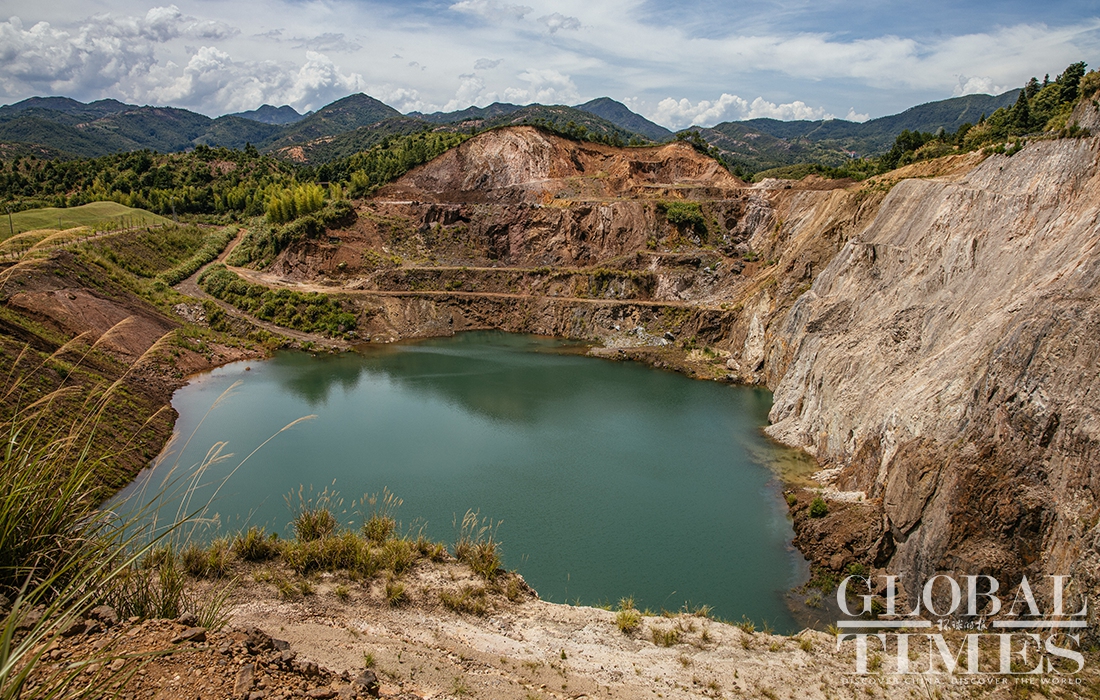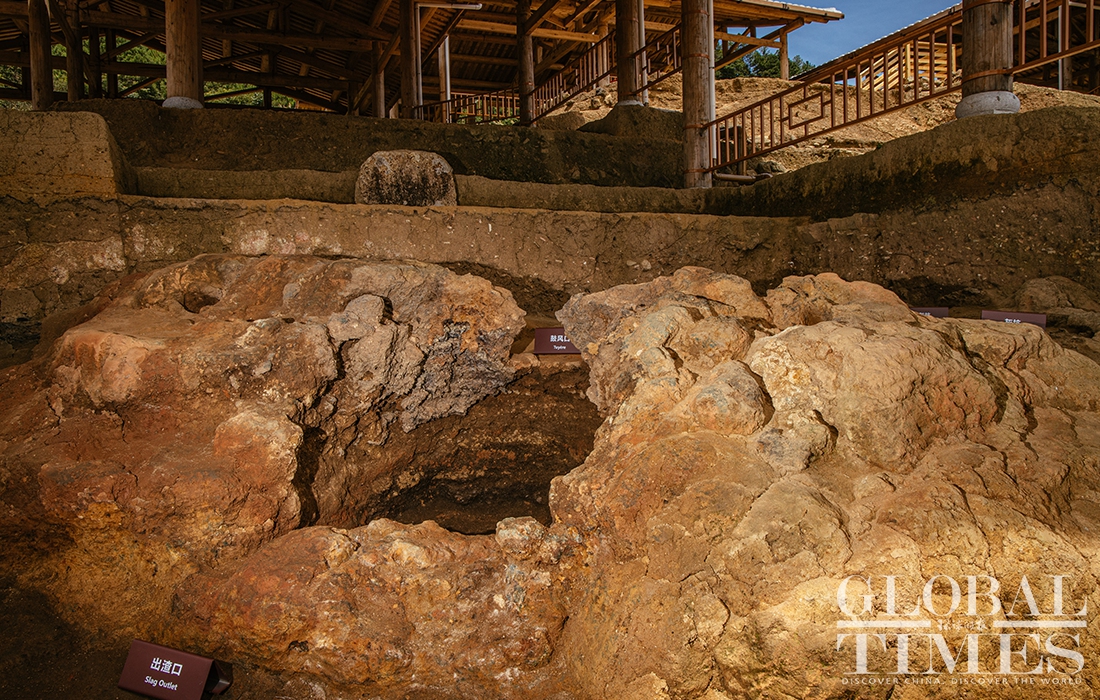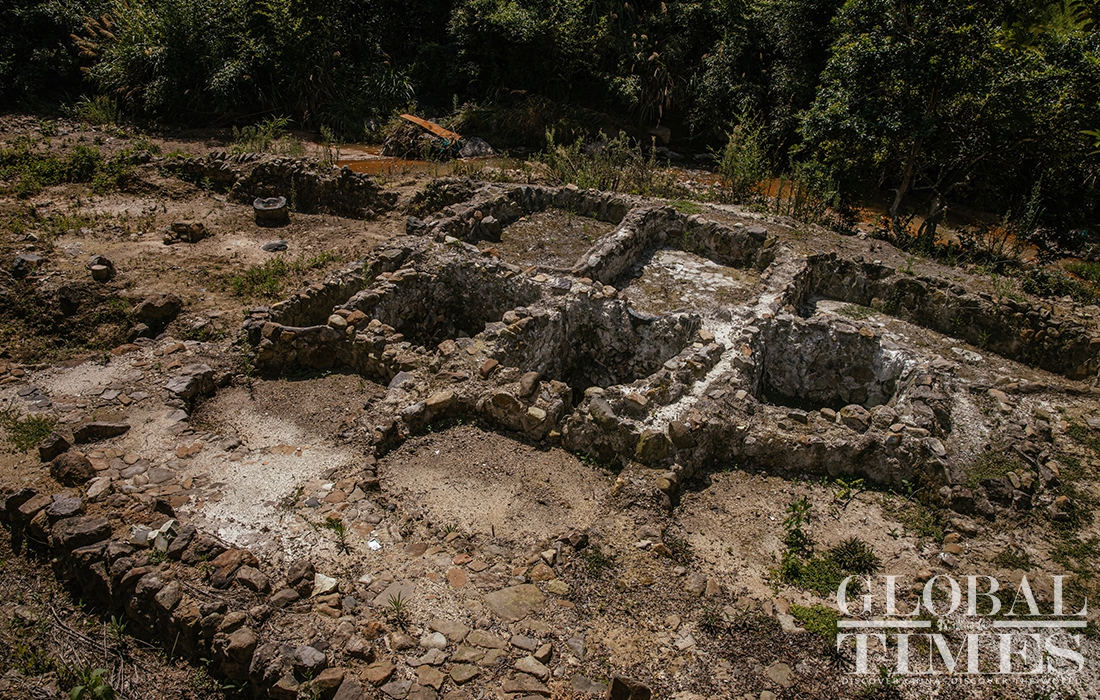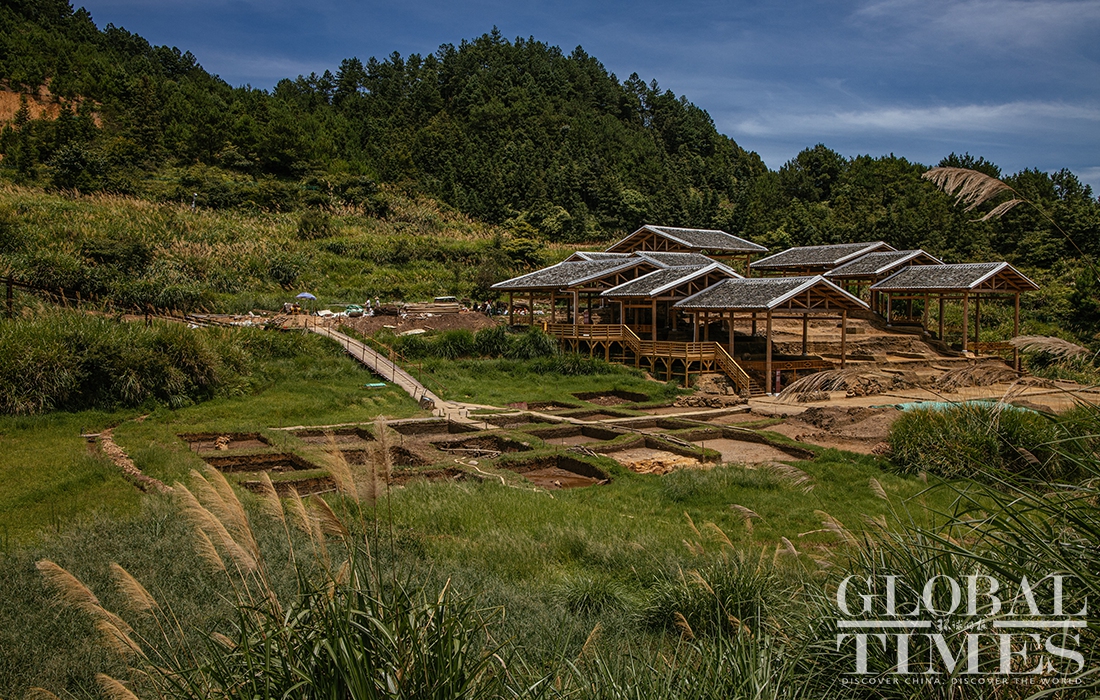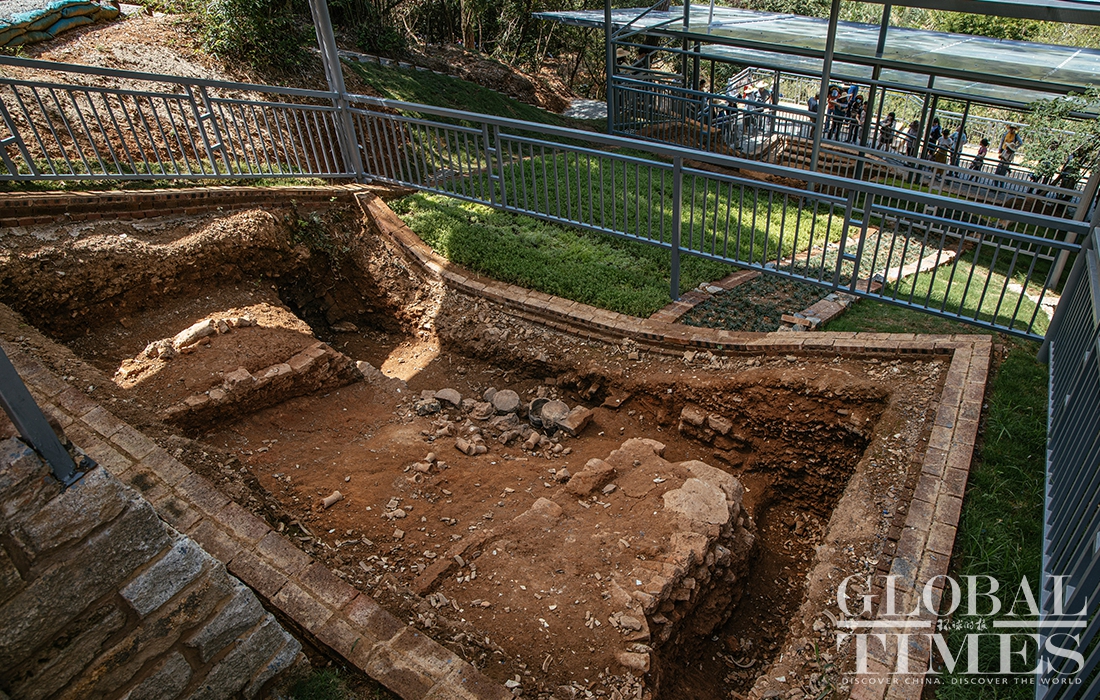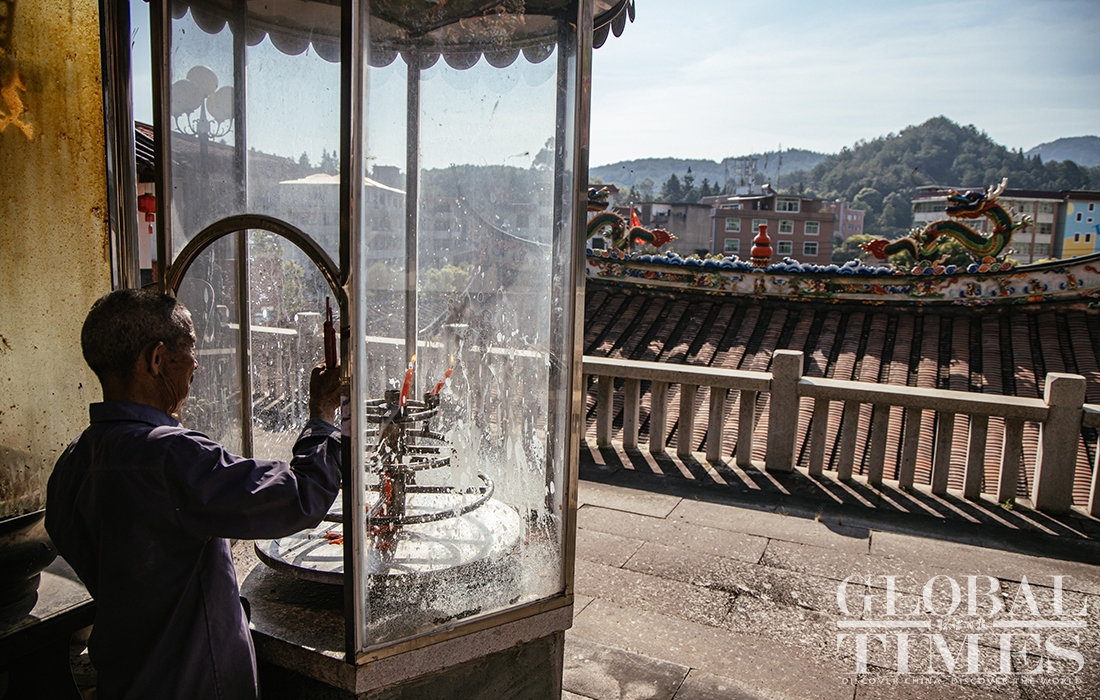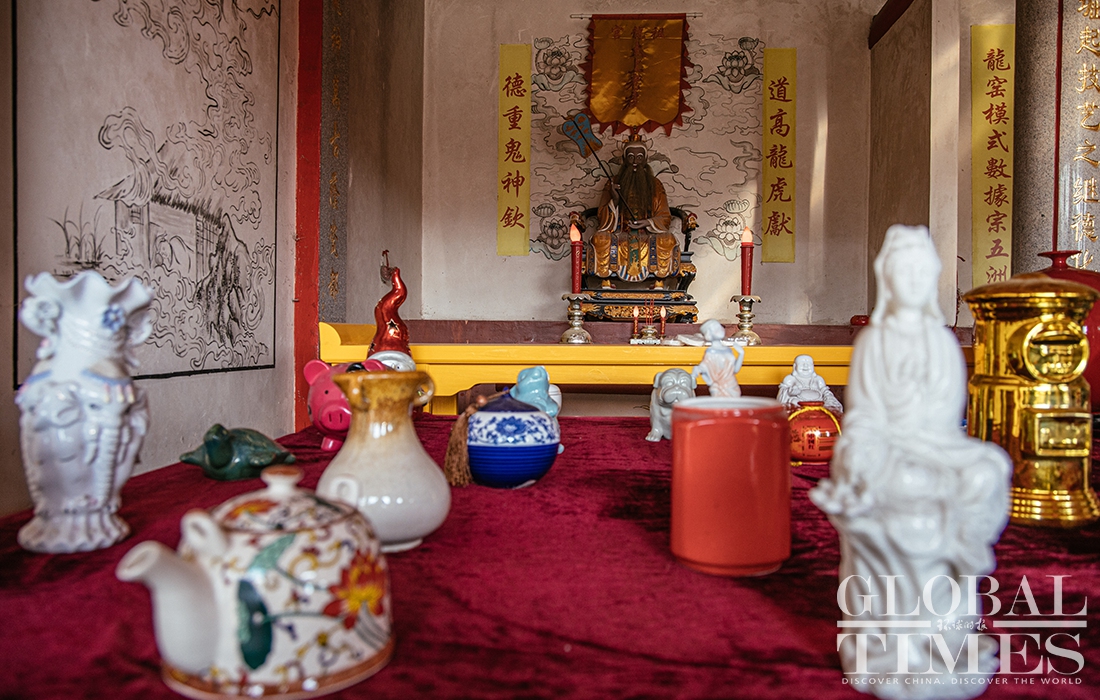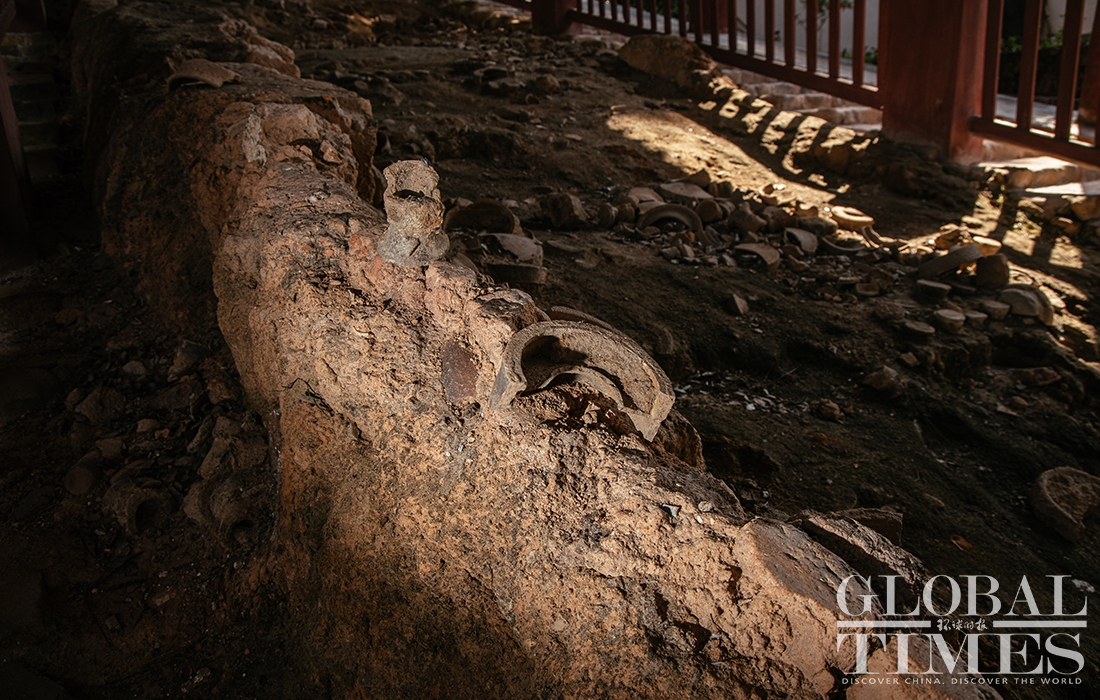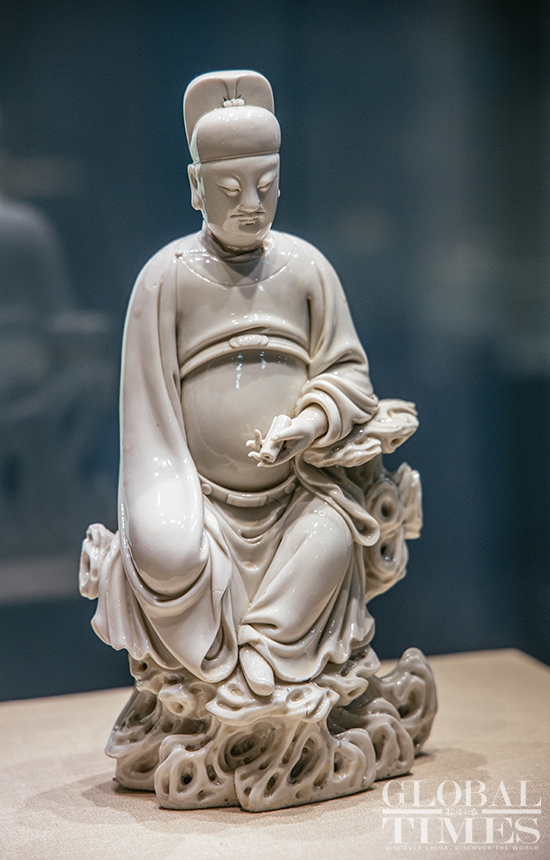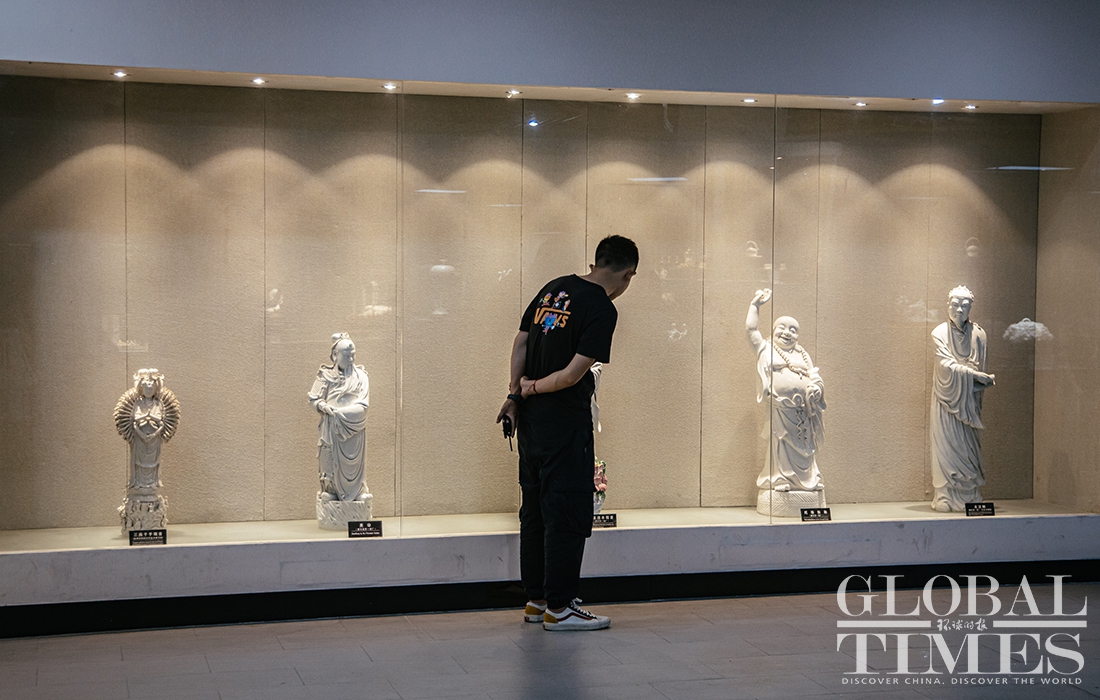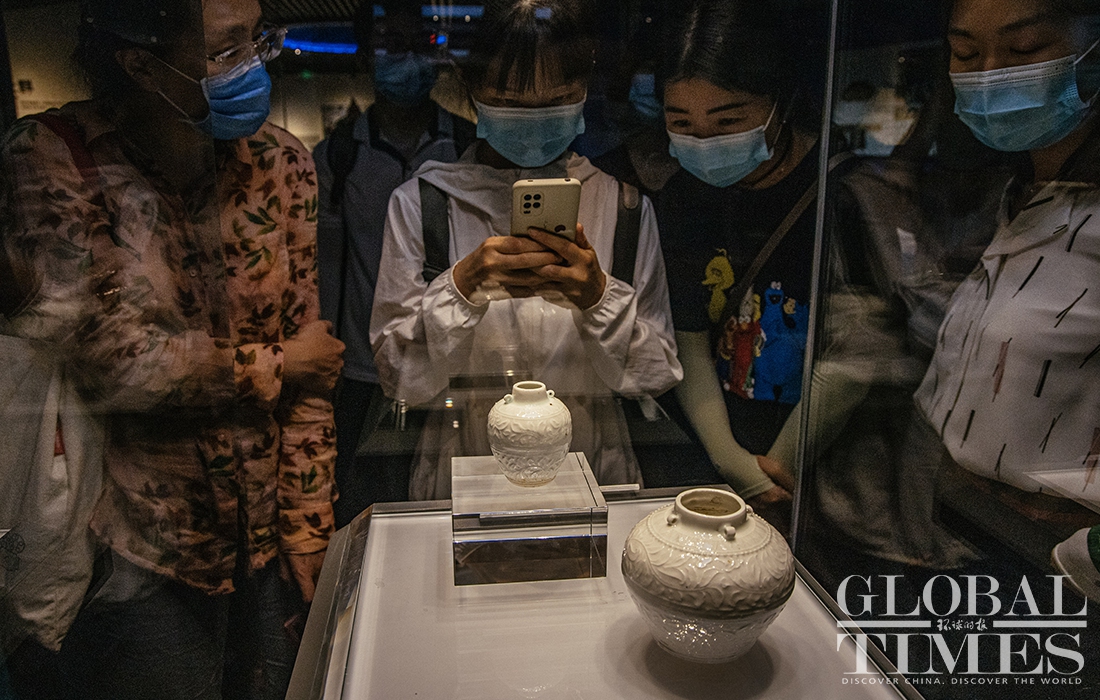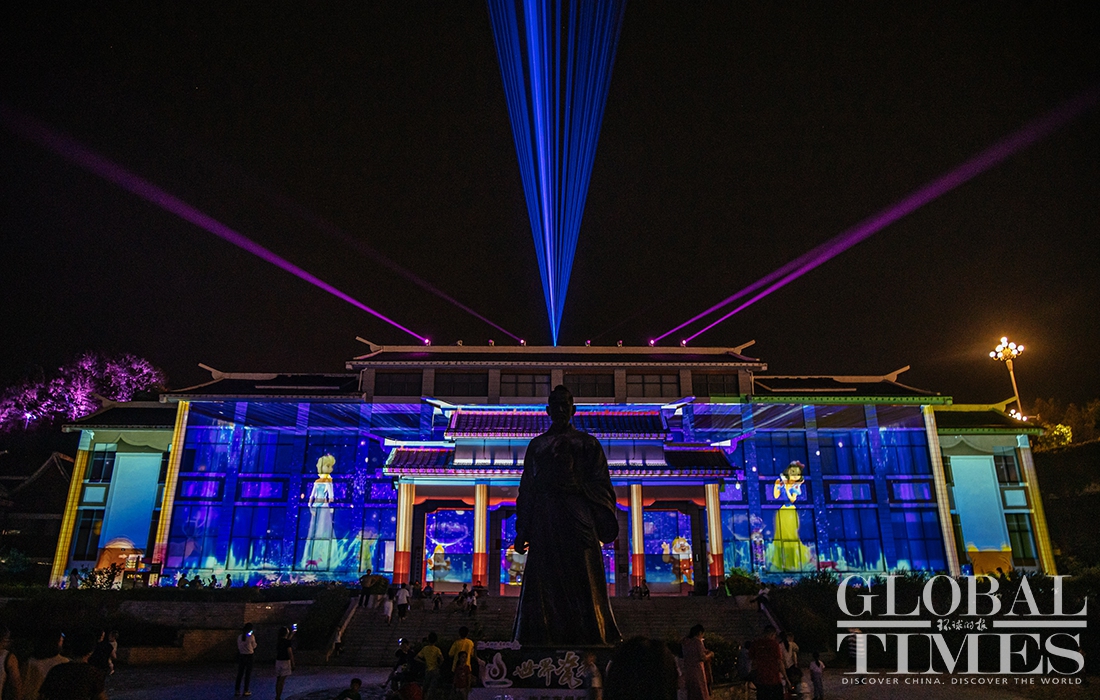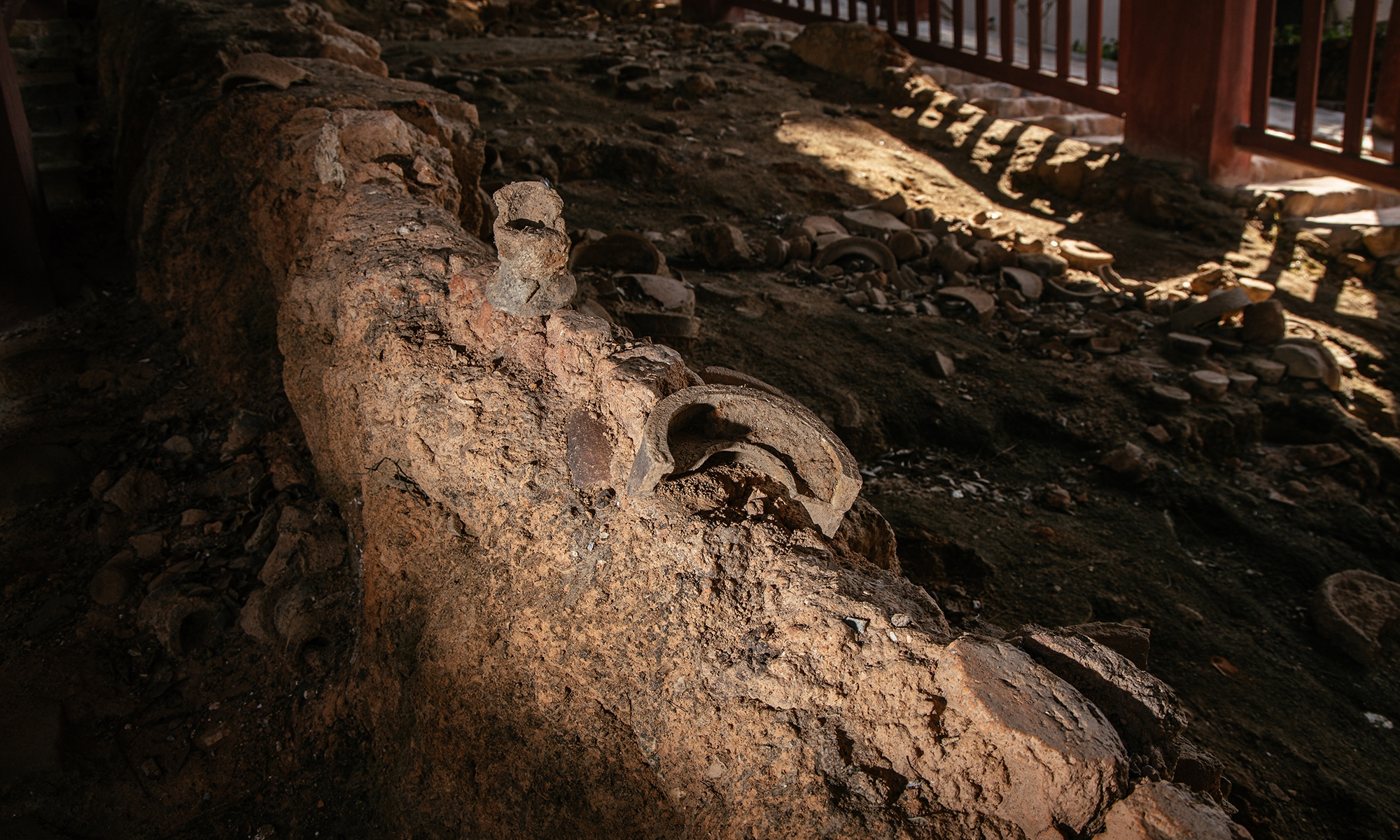Editor's Note:
Dehua county of Quanzhou in East China’s Fujian Province was a well-known center for porcelain production, which originated in Tang Dynasty (618-907). Its products, among which the most popular were white porcelain, were exported widely all over the world, from Southeast Asia to Africa.
The Xiaocaopu Iron Production Site of Qingyang Village in Anxi County, Quanzhou, presents well-reserved ironing plants that testify the exquisite iron production process.
The thriving porcelain and iron industries lay a solid foundation for Quanzhou to be a world ocean trade center during Song and Yuan dynasties. (Photos: Li Hao/GT)
The Xiaocaopu Iron Production Site of Qingyang Village in Anxi County, Quanzhou, presents well-reserved ironing plants that testify the exquisite iron production process.
The thriving porcelain and iron industries lay a solid foundation for Quanzhou to be a world ocean trade center during Song and Yuan dynasties. (Photos: Li Hao/GT)
